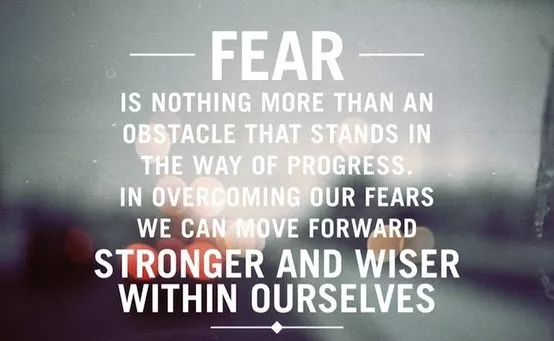Ah, enlightenment… So motivating. So inspiring. So misunderstood. Exasperatingly unattainable when sought after, and yet gratifyingly entangled with all things when practiced with authentic non-attachment.
But where does our unenlightened-self end and our enlightened-self begin? Where does our caterpillar-self die and our butterfly-self emerge? In the cocoon? At the crossroads?
Over the bridge from free animal to individuated Man, from self-actualized Man to self-overcoming Overman? And how many cocoons, crossroads, bridges must we traverse? How many dark nights of the soul must we descend into and ultimately prevail over? The answers can range from “zero” to “infinity,” from “there is no answer” to “there are many.”
When it comes down to it, enlightenment is neither here nor there, but here and there, somehow. It’s a Fibonacci-esc reaching-out toward an unreachable Phi.
It’s a constant overcoming of inconsistency with a healthy detachment from Consistency itself. It’s counterintuitive intuitiveness. It’s insurmountable and yet absolutely effortless. It’s so imperfectly straightforward that it’s perfectly crooked.
So impossibly attainable that it’s probably unattainable. It’s a “going through the motions” of letting go, of being in the moment, with the full realization that the moment is just as illusory as the past and the present.

It’s both a soft animal-dying from moment to moment and a hard soul-survival from day to day, with the uncanny ability to transcend both with a Humor of the Most High.
But it is not without its setbacks. It doesn’t come easy, if at all. The journey is the thing, sure, but the journey can often be a kick in the soul, a thousand blows to the ego, a constant tripping over the self which always seems to be in the way somehow.
It’s a series of sojourns, some of which can be profoundly unpleasant in the short-run but, over the long-haul and in hindsight, they were necessary sharpening stones.
Here then are seven common pitfalls on the path to enlightenment.
1) Fear of change:
“The only way to make sense out of change is to plunge into it, move with it, and join the dance.” ~ Alan Watts
This is probably the biggest obstacle on the path to enlightenment. Change is inevitable. We all know this. And yet, on some level, we all fight it. We’re told to live in the moment, after all. And who we are in the moment is seemingly fixed. Though who we are from moment to moment is constantly changing.
We know this, and yet we feel the same. So why embrace change when it is change that seems illusory? That’s the ontological trick. That’s the existential trap. And so we cling to permanence, not realizing that letting go of permanence and going with the flow of impermanence is the more enlightening prospect.
2) Seeking answers rather than questions:
“I would rather have questions that can’t be answered than answers that can’t be questioned.” ~ Richard Feynman
Ah, the elusive answer. So many of us imagine that enlightenment will “give us all the answers.” And yet, it’s more likely to bring about more interesting questions. One realizes that the only “answer” is to question. But there’s a kind of existential elegance to not relying upon answers, a kind of ontological smoothing-out of empiricism that makes curiosity primary and the quenching of curiosity secondary.
Between this answer and that question is a mysterious well of imagination that we can dip into and discover better answers and even better questions. Seeking out better questions rather than settling on fixed answers allows the Great Mystery to be both great and a mystery.
3) The Existential Blackhole:
“The only thing that can fill an eternal hole is the eternal.” ~ Elizabeth Gilbert
Beneath extreme piety and extreme irreverence is a gaping blackhole that sucks the vitality out of life. Go too far into the cultural infrastructure of religious morality and the vitality of your life gets sucked up into dogmatic nothingness. Go too far the other way into the anti-cultural infrastructure of iconoclasm and the vitality of your life gets sucked up into nihilistic nothingness.
Indeed, extremism either way is the bane of enlightenment. The key is moderation, humility balanced with audacity. Avoid falling into either abyss by dancing between them on the Stage of Imagination within the Theater of the Absurd. Life becomes vitalized by transforming extremism into imaginative and meaningful art. As Nietzsche observed, “To live is to suffer and to survive is to find meaning in this suffering.”
4) Putting all your eggs into one basket:
“When you put all your eggs in one basket you must clutch that basket for dear life.” ~ Ernest Becker
Tip the basket. Stretch your comfort zone. Challenge your inner comfort-junky, that part of yourself that clings to security and luxury and tends to become content and apathetic. Toss out your ill-gained consolation prizes and wash off your over-indulgent solace. Too much succor is for suckers. Push the envelope until your red with papercuts.
Then, and only then, seek healing, consolation, solace, and succor. Only then, after attempting to slay the dragon and failing miserably, after getting burned to the core, only then should you return to your comfort zone. So that you may transform your failure into robustness and your ashes into a mighty Phoenix that just might (but maybe not) discover the power necessary to get the job done.
5) Thinking you’ve “made it”:
“The usefulness of the cup is its emptiness.” ~ Bruce Lee
The path is the Path. The journey is the thing. The many Buddhas that pop up along the way to convince you that you’ve made it must be bypassed at all costs or the way is lost.
The knowledge gained along the way must be released and absorbed into muscle memory or it will block the path. The water in the cup must be emptied and imbibed so that it may be filled again and again so that the way may remain the Way.
What has been learned must also be unlearned so that what has not yet been learned can be learned and then unlearned, ad infinitum. To ‘unlearn’ is not to forget, but to forgive, to expiate, to surrender, and to reconcile the static past into the dynamic present so that an enlightened future might unfold.
6) Taking yourself too seriously:
“The one serious conviction that a man should have is that nothing is to be taken too seriously.” ~ Nicholas Butler
It’s all a laughably inconsistent song & dance. We lose our way when we vainly attempt to ignore, suppress, or become indifferent to the contradictory beauty of this song & dance. When we become overly serious with our ideas, ideologies, and/or politics we lose the primary experience.
We distort our essential perception and blockade the path. Every time we take ourselves too seriously, we prevent ourselves from experiencing the humorous joy of being sincere with the gloriously inconsistent and mysteriously dynamic song & dance.
Sing sincerely rather than self-seriously, like a mighty trumpet for the mouthpiece of the universe. Dance authentically rather than self-importantly, like a magic wave crashing out of a cosmic ocean.
Sincere and authentic art, rather than overly-serious and strict farce, maintains the path, and being aware of it all as possibility sustains its unfolding.
7) Inability to laugh at the cosmic joke:
“The cure for boredom is curiosity. There is no cure for curiosity.” ~ Dorothy Parker

At the end of the day, it’s all just one big cosmic joke. Even enlightenment itself is a joke. But that’s okay. It must be okay in order for enlightenment to authentically unfold. And so a provident sense of humor is essential.
The ability to flip the tables on reality itself and laugh whole-heartedly at the absurdity of it all is paramount. Having the courageous aptitude to look into the abyss of the mirror and laugh soulfully into the decaying teeth of Death is vital in order to keep the path jovial and life-bringing, despite mortality and entropy.
Such jocund humor is indispensable on the path to enlightenment. Indeed, it can be argued that it is the epitome of the path itself. Sure, it’s difficult to maintain a sense of humor during dark times. But as Søren Kierkegaard surmised, “It is not the path which is the difficulty.
It is the difficulty which is the path.” And a good sense of humor transcends it all using numinous curiosity.
Image source:







 She discovered the oneness that we all share, she sensed people who were boarding planes to come for her funeral and encountered her two closest loved ones that had passed away and conversed with them and she understood that she had to come back, even though she was happier not being in her cancer stricken body. She knew that when she came back she would be healed completely.
She discovered the oneness that we all share, she sensed people who were boarding planes to come for her funeral and encountered her two closest loved ones that had passed away and conversed with them and she understood that she had to come back, even though she was happier not being in her cancer stricken body. She knew that when she came back she would be healed completely. This is a tough one, isn’t it, I have my own set of fears and I’m sure you do too. Its obvious, we’re conditioned from the time we grow up. Don’t climb that wall or tree, you will get hurt if you fall. Don’t eat certain meats or do certain things to displease God. Go to church every Sunday or you will be punished. The list is never ending, but as you grow up depending on your experiences in life you tend to outgrow some of these, as well as gain some more.
This is a tough one, isn’t it, I have my own set of fears and I’m sure you do too. Its obvious, we’re conditioned from the time we grow up. Don’t climb that wall or tree, you will get hurt if you fall. Don’t eat certain meats or do certain things to displease God. Go to church every Sunday or you will be punished. The list is never ending, but as you grow up depending on your experiences in life you tend to outgrow some of these, as well as gain some more. 5) Always be Yourself
5) Always be Yourself






 Our failure to imagine is our failure to notice. When it comes down to it, there are no ordinary moments. Every moment is extraordinary. Each and every second is an infinite branching out into ecstatic union. When we merge with the cosmic narrative we see infinity in all things.
Our failure to imagine is our failure to notice. When it comes down to it, there are no ordinary moments. Every moment is extraordinary. Each and every second is an infinite branching out into ecstatic union. When we merge with the cosmic narrative we see infinity in all things. “Monotony collapses time; novelty unfolds it.” ~ Joshua Foer
“Monotony collapses time; novelty unfolds it.” ~ Joshua Foer


